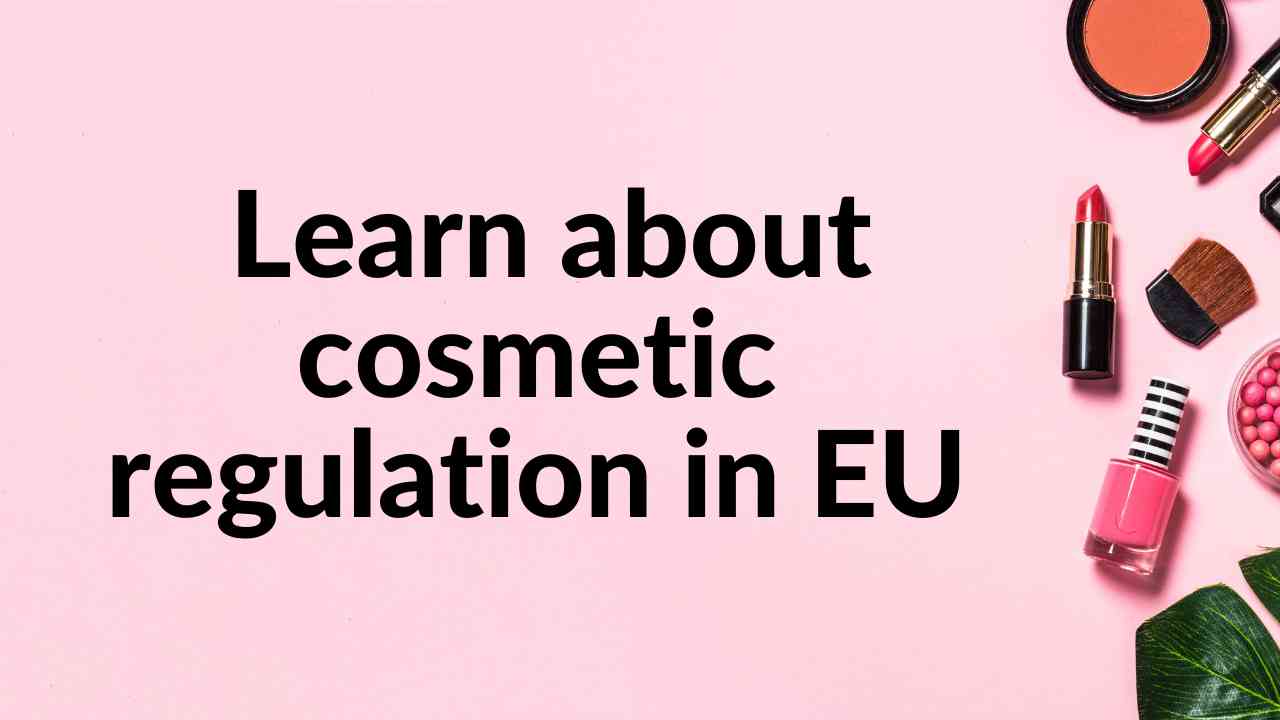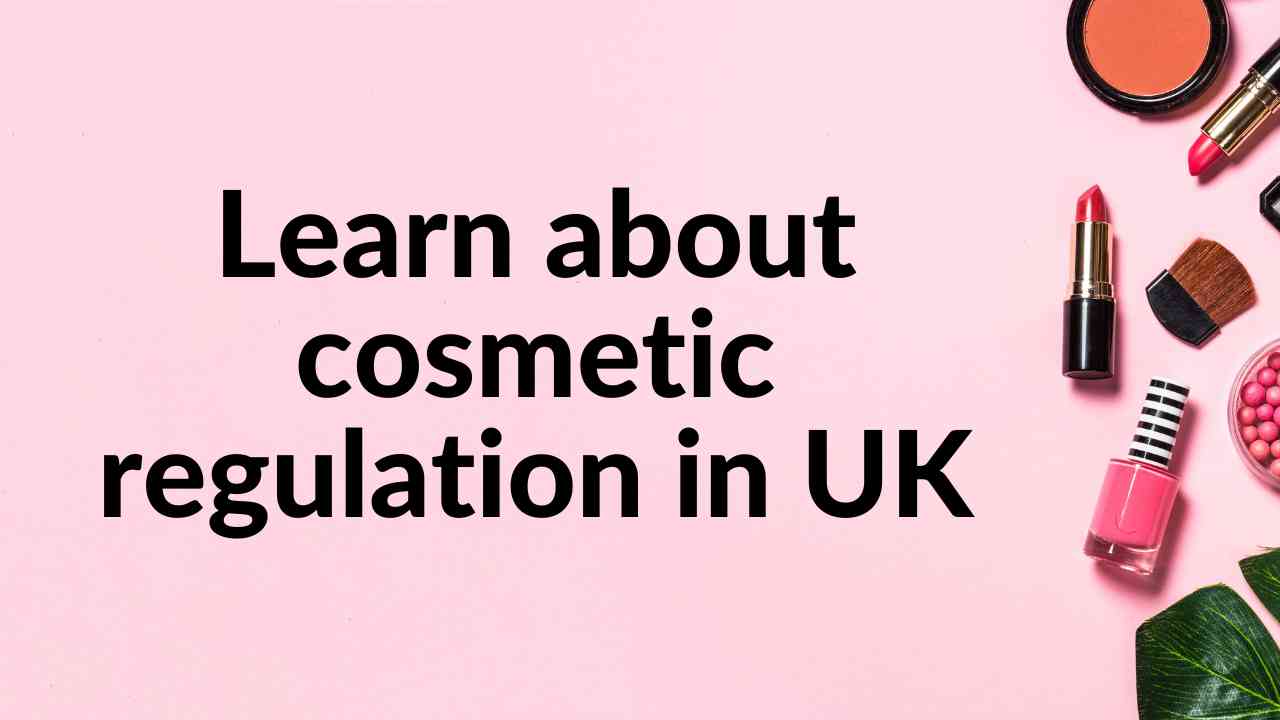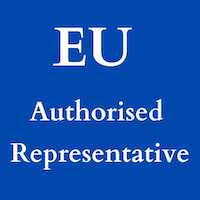Cosmetic Regulation EU UK
Learn about Cosmetic regulation in the EU & UK
Regulation 1223/2009 and Cosmetic Products Enforcement Regulations 2013 lay down the rules for cosmetics in the EU and UK. Before you can sell your cosmetic on the EU or UK market, it must comply with these regulations. Read on to learn more.
Contents
How do EU and UK cosmetic regulations differ?
How to comply with cosmetic regulation in EU & UK
How do I get EU cosmetics certification?
Who regulates cosmetics in EU?
What are the categories of cosmetic products?
What ingredients are banned in EU?
Who regulates cosmetics in UK?
What is the UK cosmetics regulation?
What needs to be on the cosmetic label in UK?
What ingredients are banned in UK?
Do you need a licence to sell cosmetics on Etsy?
Why are cosmetics regulated?
Since cosmetics are applied directly to the skin and can be absorbed into the body, potentially causing harm, they require a risk assessment. EU and UK regulations ensure that cosmetics undergo this risk assessment prior to placing on the market. Additionally, regulations on marketing claims mean consumers are protected from false or misleading claims about a product’s effectiveness.
What is a cosmetic product?
The definition of a cosmetic according to EU regulation 1223/2009 is:
‘cosmetic product’ means any substance or mixture intended to be placed in contact with the external parts of the human body (epidermis, hair system, nails, lips and external genital organs) or with the teeth and the mucous membranes of the oral cavity with a view exclusively or mainly to cleaning them, perfuming them, changing their appearance, protecting them, keeping them in good condition or correcting body odours;
How do EU and UK cosmetic regulations differ?
EU and UK cosmetic regulations are almost identical but there are some differences. Here are three key ways EU and UK regulations differ.
- Notification Portal: Cosmetics sold on the UK market must be notified via a UK portal while EU-marketed products must be notified via an EU portal.
- Responsible Person: For UK, the Responsible Person (RP) must be based in the UK; cosmetics sold in EU must have an EU-based RP.
- Labels: UK packs require a UK RP address while products on the EU market require an EU RP address.
Check out our online video guides to learn about the differences.
How to comply with cosmetic regulation in EU & UK
The first thing you require is a Cosmetic Safety Assessment or CPSR, which assesses the formulation and other things to check for safety and compliance with cosmetic regulation. The 5 key requirements to comply with cosmetic regulation are:
1. Cosmetic Safety Assessment (CPSR)
You require the expertise of a trained and qualified cosmetic safety assessor to carry out a risk assessment called a CPSR on your cosmetic. Are you new to the CPSR process and want to fast-track the CPSR process? Watch our online video guides.
2. Responsible Person (RP)
You will need to assign a business contact and address as the person responsible for the compliance and safety of the cosmetic. If you sell in the UK and EU you will need one in both territories. But if you sell in just UK then you don’t need an RP in the EU. Likewise if you just sell in EU you do not need an address in the UK. This EU/UK address goes on the label along with other required information such as list of ingredients and allergens.
3. Product Information File
A product information file comprises all the data on your cosmetic including label. It is quite straight forward and we can provide some guidance for free – just get in touch!
Supercharge your cosmetic regulation knowledge with our step by step video guide. Includes time-saving templates to fast-track the CPSR process.
4. Notification of cosmetic product
Once you have your CPSR, you must notify the authorities of key information about the cosmetic through a special portal. Before Brexit, there was one portal for EU and UK but since January 2021, the official Brexit date, if you sell in both EU and UK you must notify via two portals: one for EU and one for UK. If you sell in just UK then you don’t need to notify via the EU portal. Likewise if you just sell in EU you do not need to notify via the UK portal.
5. Post-marketing surveillance
Under cosmetic regulation in EU and UK, cosmetic brand owners are required to report any undesirable or Serious Undesirable Effects (SUE) to the authorities. This means you need a system of collecting and reporting undesirable effects from customers. If any undesirable or Serious Undesirable Effects (SUE) are reported by end-users, the manufacturer must take action immediately to resolve the situation. Also, the EU Responsible Person should be informed of any changes in formulation, claims, product names or any other matters that could potentially impact the compliance of their product. Reports of SUE should be sent to individual authorities. To notify the UK click here.

How do I get EU cosmetics certification?
There is no official ‘certificate’ for an approved cosmetic but there are strict requirements and a process manufacturers must follow. One requirement is the CPSR, which is sometimes referred to as a certificate but it is more of a report than a certificate. Read on to learn more.
Who regulates cosmetics in EU?
The main EU regulator is the European Commission. They are responsible for creating and enforcing top level EU-wide regulations that ensure cosmetics sold in the EU are safe. But the national authorities of each member states also play a part in enforcing EU regulations and ensuring that products on the market meet safety standards.
What are the categories of cosmetic products?
The categories of cosmetic products are as follows:
- Soaps
- Creams, lotions, gels, foams
- shampoos, conditioners & lacquers
- Oils
- Face masks
- Liquids, pastes and powders
- Perfumes
- Bath salts
- Hair removal cream
- Deodorants
- Hair colourants & products for setting, waving, straightening, and fixing
- Shaving products
- Make-up removal products
- Lip salves
- Teeth & mouth care products
- Nail care products
- External intimate hygiene products
- Sun protection products
- Skin-whitening products
- Anti-wrinkle products
What ingredients are banned in EU?
We have a dedicated page on banned cosmetic ingredients in EU (coming soon)

Who regulates cosmetics in UK?
Depending on the compliance or safety issue, you may hear from either the Trading Standards, the MHRA, the Advertising Standards Authority or, in serious cases, the Police. The Office for Product Safety and Standards (OPSS) also has a role as the national regulator for all consumer products in the UK except for vehicles, medicines and food. To learn more about how cosmetics are regulated watch our online video guide.
What is the UK cosmetics regulation?
Cosmetic regulation in UK is laid down in both the Regulation 1223/2009 and Cosmetic Products Enforcement Regulations 2013. The aim of UK cosmetics regulation is to ensure a safe and competitive cosmetics market.
Are cosmetics regulated in UK?
Yes. Regulation is described in the Regulation 1223/2009 and Cosmetic Products Enforcement Regulations 2013.
What needs to be on the cosmetic label UK?
We have a separate page on the cosmetic label requirements (coming soon).
Do cosmetics need to be tested UK?
Yes. All cosmetics in the UK should be tested before placing on the market. There are different types of tests: microbiological, challenge and stability testing. You may not need all 3 tests. It depends on the type of cosmetic and its formulation. Learn more about cosmetic testing by watching our online video guide.
What ingredients are banned in UK?
We have a dedicated page on banned cosmetic ingredients in EU (coming soon)
Can you sell DIY cosmetics?
Yes provided you comply with cosmetic regulation. This means you are required to comply with Good Manufacturing Practise (GMP). GMP is a process that ensures, among other things, cosmetic products are produced to a safety standard, consistently batch after batch.
Do you need a licence to sell cosmetics on Etsy?
There is no official ‘licence’ but you are required to comply with the cosmetic regulations including CPSR and notification.
About Medic Pro
What We Do
We are a London-based regulatory affairs consultancy providing services to the e-cigarette, cosmetic, biocide, pharmaceutical and medical device industry. We help e-cigarette companies comply with the Tobacco Products Directive and pharmaceutical companies obtain and maintain medical product licences. We also offer UKAS accredited biocide and analytical testing services.


